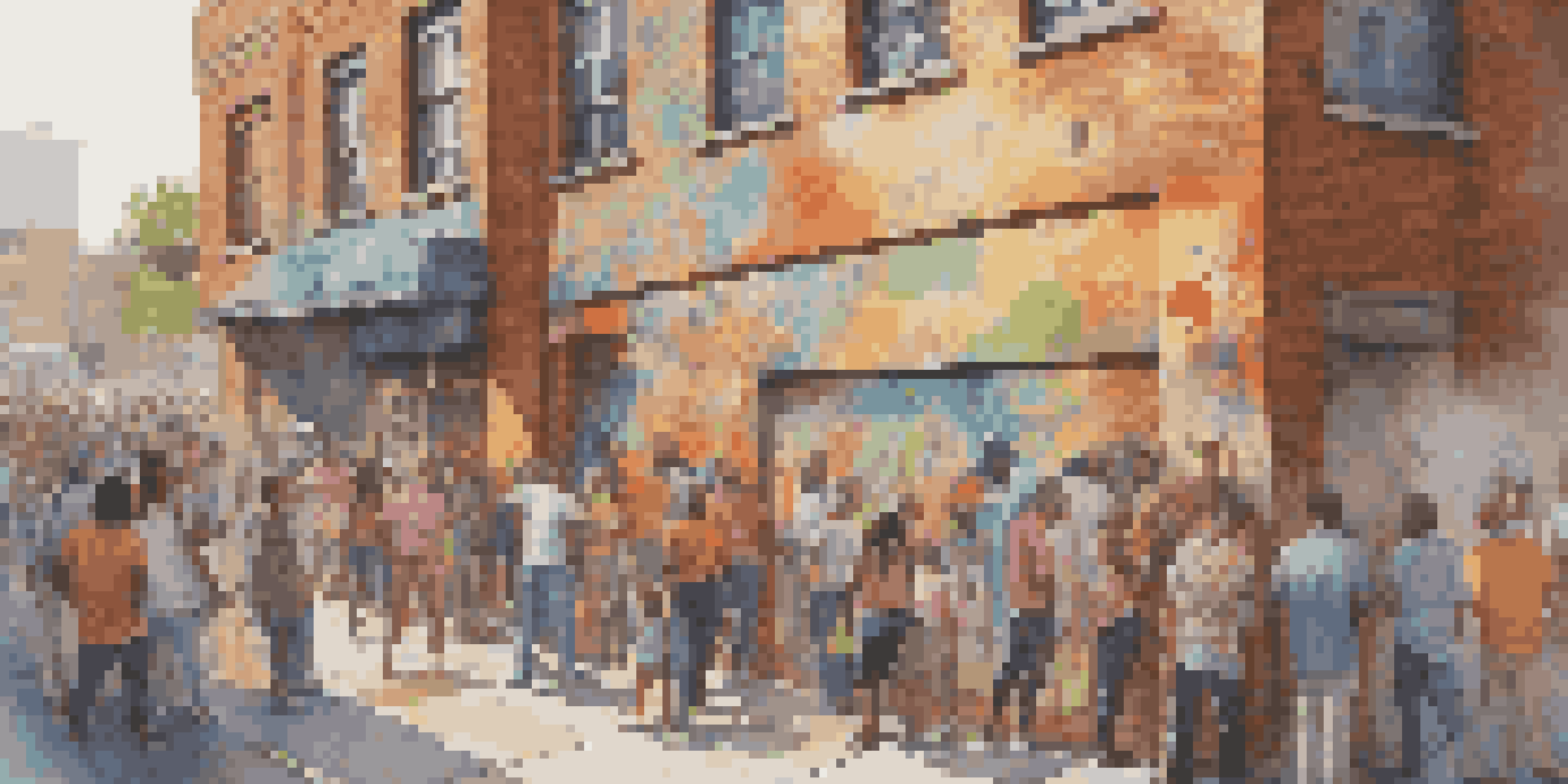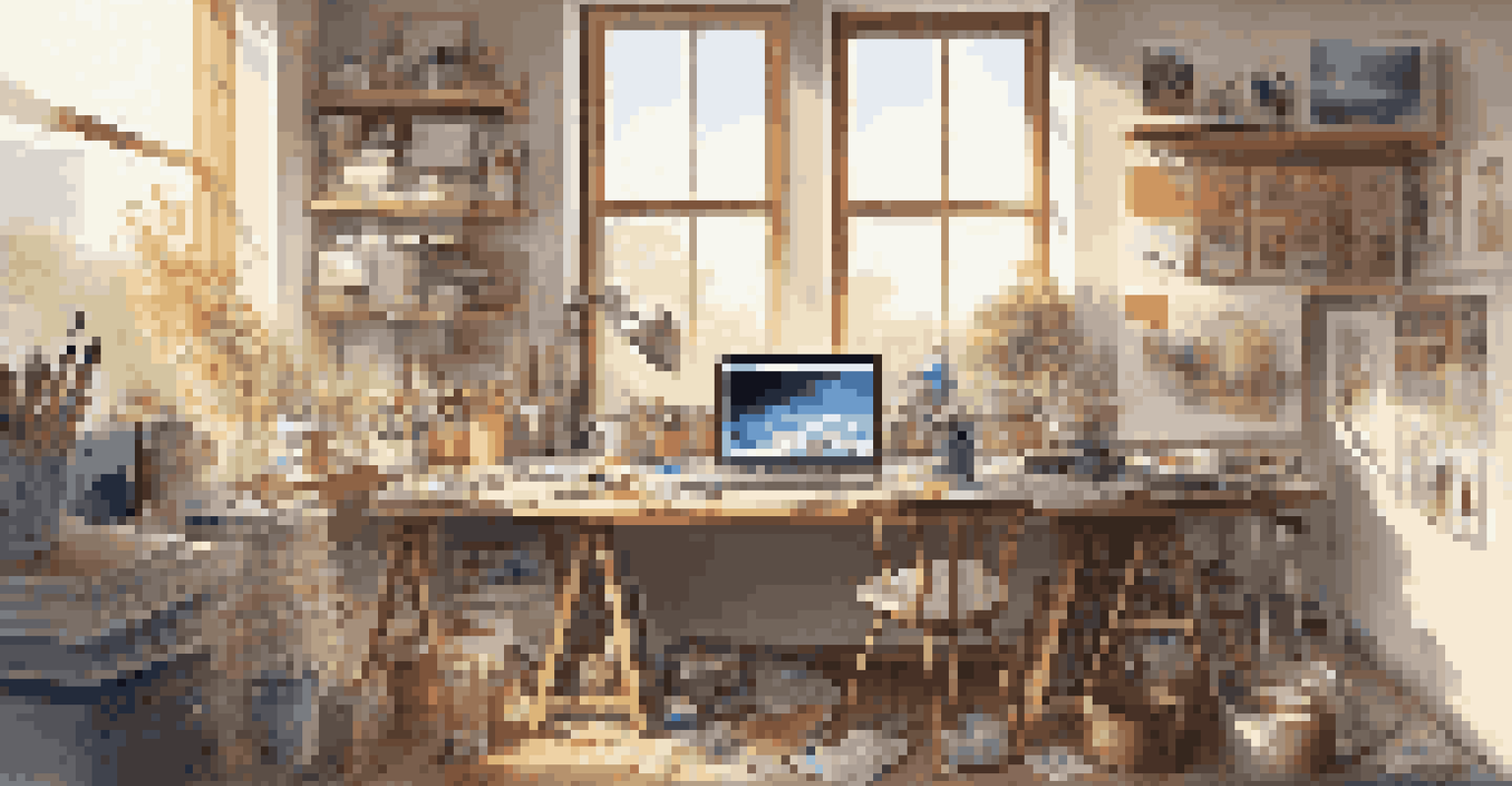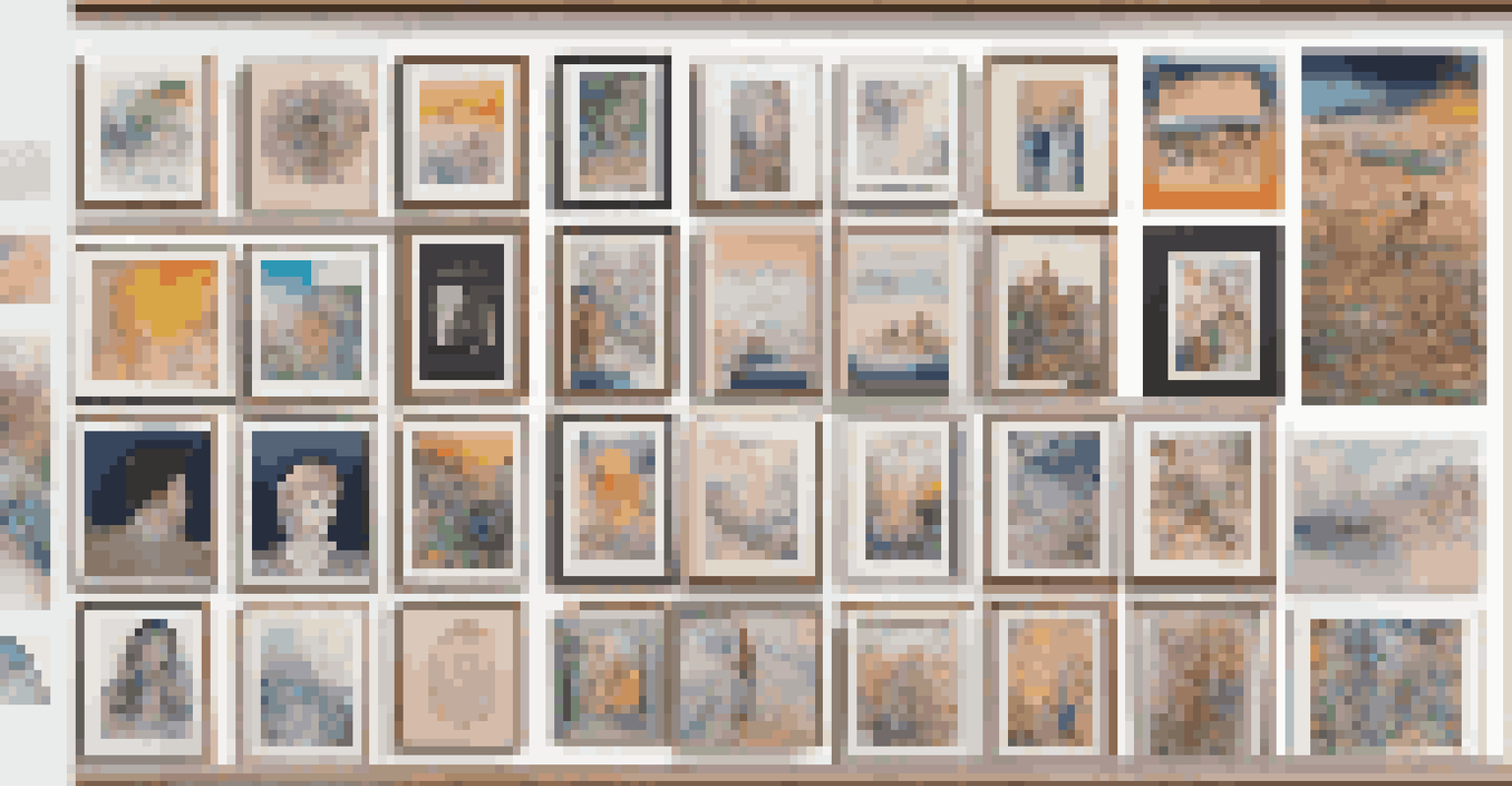The Role of Social Media in Shaping Artistic Trends

The Rise of Social Media as an Artistic Platform
In recent years, social media has transformed the way artists share their work and connect with audiences. Platforms like Instagram and TikTok have become virtual galleries where artists can showcase their creativity without the need for a physical space. This democratization of art allows emerging talents to gain visibility alongside established names, creating a diverse artistic landscape.
Art is not what you see, but what you make others see.
Moreover, the instantaneous nature of social media means that trends can rise and fall in a matter of days. An artist's unique style can go viral, inspiring countless others to adopt similar techniques or themes. For example, the #ArtChallenge phenomenon encourages artists to reinterpret classic works or create new pieces based on specific prompts, leading to a collective surge in creativity.
As artists engage with their followers, they not only receive immediate feedback but also foster a sense of community. This interaction can lead to collaborations and innovative projects that might not have been possible in traditional art settings, showcasing how social media serves as a catalyst for artistic growth.
Connecting Artists Worldwide Through Social Media
Social media has broken down geographical barriers, allowing artists from different cultures and backgrounds to connect and collaborate. This global network facilitates the exchange of ideas and techniques, enriching the artistic community with diverse influences. For instance, an artist in Tokyo can easily share their work with a fellow creator in New York, leading to a fusion of styles and concepts.

Platforms like Pinterest and DeviantArt serve as repositories of inspiration, where artists can discover trends from around the world. This cross-pollination of ideas often leads to the emergence of new movements, as artists incorporate elements from various cultures into their own work. The result is a rich tapestry of artistic expression that reflects a more interconnected world.
Social Media Empowers Artists
Social media democratizes art by allowing emerging artists to showcase their work alongside established names, fostering a diverse artistic community.
Additionally, the accessibility of social media means that even those in remote areas can share their art and connect with a global audience. This inclusivity not only democratizes art but also ensures that a wider range of voices and perspectives is heard, fostering a more vibrant and diverse artistic landscape.
The Impact of Viral Trends on Artistic Expression
Viral trends on social media can significantly impact artistic expression, often pushing artists to adapt their styles to align with popular themes. For instance, the rise of digital art and animation has been propelled by viral challenges that encourage artists to experiment with new techniques. This trend can lead to a rapid evolution of artistic styles as creators seek to capture the attention of online audiences.
The best way to predict the future is to create it.
While some may view the influence of viral trends as detrimental to originality, it can also spark creativity and innovation. Artists may take a trending concept and put their unique spin on it, leading to fresh interpretations and new sub-genres. This process of remixing and reimagining can ultimately enrich the art world, blending traditional techniques with modern influences.
However, the pressure to conform to viral trends can also create challenges for artists who prioritize authenticity. Striking a balance between personal expression and audience expectations is crucial, as artists navigate the fine line between being inspired by trends and losing their individuality.
Social Media as a Tool for Art Marketing
Social media is not just a platform for sharing art; it has become an essential marketing tool for artists. By building a strong online presence, artists can promote their work, engage with potential buyers, and showcase their creative process. Effective use of hashtags and targeted content can help artists reach a broader audience, increasing their chances of sales and recognition.
Many artists now use social media to announce new projects, exhibitions, or merchandise directly to their followers. This direct line of communication fosters a sense of loyalty and community, encouraging fans to support their favorite creators. For example, artists may host live Q&A sessions or behind-the-scenes looks at their work, deepening the connection with their audience.
Global Connections Enhance Creativity
Artists can connect and collaborate globally through social media, leading to innovative styles that blend cultural influences.
Moreover, social media allows for the exploration of various marketing strategies, such as collaborations with influencers or other artists. These partnerships can amplify visibility and introduce artists to new audiences, proving that social media is a powerful ally in the quest for artistic success.
The Role of Influencers in Shaping Artistic Trends
Influencers play a significant role in shaping artistic trends, often acting as tastemakers who introduce new styles to their followers. With their large audiences, influencers can quickly elevate an artist's work, creating a ripple effect that influences wider trends in the art community. For instance, an influencer featuring a particular artist in their feed can lead to a surge in interest and demand for that artist's work.
Additionally, influencers often collaborate with artists to create unique, limited-edition pieces or exclusive content. These partnerships not only showcase the artist's talent but also tap into the influencer's audience, blending the worlds of art and social media. This synergy can create exciting opportunities for both parties, leading to innovative projects that capture public attention.
However, the relationship between artists and influencers is not without its challenges. Artists must carefully choose which influencers to collaborate with, ensuring that their values align and that the partnership enhances their brand rather than detracts from it.
The Evolution of Artistic Styles Through Online Communities
Online communities have become vital in shaping and evolving artistic styles. Platforms like Reddit and Facebook host groups where artists can share their work, provide critiques, and discuss trends. This collaborative environment encourages experimentation and growth, resulting in the emergence of new styles that reflect the collective input of community members.
Furthermore, these communities often serve as safe spaces for artists to explore unconventional ideas that might not be accepted in traditional settings. Members can support each other in pushing boundaries, leading to groundbreaking work that challenges the status quo. For example, niche movements like vaporwave and surrealism have found fertile ground in online forums, gaining traction and popularity.
Trends Influence Artistic Expression
Viral trends on social media can shape artistic styles, prompting artists to adapt while balancing personal expression with audience expectations.
The feedback loop created within these communities can also accelerate artistic development. Artists who receive constructive criticism and encouragement from their peers are more likely to refine their techniques and explore new directions, ultimately contributing to the evolution of their individual styles.
Conclusion: The Future of Art in the Age of Social Media
As social media continues to evolve, its influence on artistic trends will likely grow even stronger. Artists will find new ways to leverage these platforms to share their work, connect with audiences, and innovate their practices. The landscape of art will remain dynamic, shaped by the interactions between artists and their followers in the digital realm.
Moreover, the ongoing dialogue between artists across the globe will foster an environment of continuous learning and inspiration. This interconnectedness can lead to a more inclusive art world where diverse perspectives can thrive, enriching the cultural tapestry.

In essence, social media is not just a passing trend; it is a powerful force that will continue to shape the future of art. As artists embrace these tools, they will redefine what it means to create and connect in a world that is more interconnected than ever.